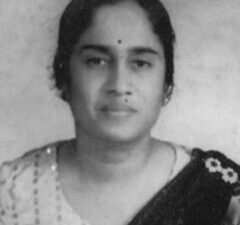Throughout history, women have made significant contributions to the fields of science and technology. Despite facing numerous obstacles and gender biases, these remarkable women have made groundbreaking discoveries, invented revolutionary technologies, and pioneered advancements that have shaped our modern world. In this article, we will shed light on some of the lesser-known contributions of women in science and technology, highlighting their invaluable impact on society.
1. Hedy Lamarr: The Inventor Behind Wi-Fi
While Hedy Lamarr is primarily known for her acting career, she also made a groundbreaking contribution to the field of technology. In the 1940s, during World War II, Lamarr co-invented a frequency-hopping spread spectrum technology, which laid the foundation for modern-day Wi-Fi, Bluetooth, and GPS systems. This invention was initially developed to prevent the interception of radio-controlled torpedoes but has since become an integral part of wireless communication.
Despite the significance of her invention, Lamarr’s contribution went unrecognized for many years. It wasn’t until the late 1990s that she received recognition for her pioneering work in wireless communication.

Sparnod Fitness STH‑3002 Home Walking Pad Treadmill
Ultra‑slim, compact, and ready to use—no assembly needed. 2.5 HP motor, 1‑6 km/h speed, 2‑level incline, shock absorption, LED display, rolls under bed.
👉 View on Amazon2. Rosalind Franklin: The Unsung Hero of DNA
When discussing the discovery of the structure of DNA, James Watson and Francis Crick often take the spotlight. However, the crucial contributions of Rosalind Franklin, an English chemist, cannot be overlooked. Franklin’s work on X-ray crystallography provided vital insights into the structure of DNA, which ultimately led to the groundbreaking discovery of its double helix structure.
Unfortunately, Franklin’s contributions were largely overshadowed, and she did not receive the recognition she deserved during her lifetime. It was only after her death that her work was acknowledged, and her crucial role in the discovery of DNA’s structure was fully appreciated.
3. Ada Lovelace: The First Computer Programmer
Long before the advent of modern computers, Ada Lovelace, an English mathematician, envisioned the potential of Charles Babbage’s Analytical Engine. Lovelace is often credited as the world’s first computer programmer, as she wrote a series of algorithms for the Analytical Engine, making her the first person to recognize that a machine could do more than just calculations.
Lovelace’s visionary work laid the foundation for the development of computer programming, and her ideas continue to shape the field to this day. Her contributions were far ahead of her time and have had a profound impact on the technology-driven world we live in today.
4. Stephanie Kwolek: The Inventor of Kevlar
Stephanie Kwolek, an American chemist, made a groundbreaking discovery while working at DuPont in the 1960s. She invented Kevlar, a strong synthetic fiber that is now widely used in a variety of applications, including bulletproof vests, helmets, and protective gear. Kwolek’s invention has saved countless lives and has become an essential component in ensuring the safety of individuals in high-risk professions.
Kwolek’s remarkable achievement earned her numerous accolades, including the National Medal of Technology and Innovation. Her invention revolutionized the field of materials science and continues to have a profound impact on various industries.
5. Grace Hopper: The Pioneer of Computer Programming
Grace Hopper, an American computer scientist, played a pivotal role in the development of computer programming languages. She was instrumental in the creation of the first compiler, a program that translates human-readable code into machine-readable instructions. Hopper’s work on the compiler paved the way for the development of high-level programming languages, making it easier for programmers to write and understand code.
Furthermore, Hopper was a strong advocate for the standardization of computer languages. Her efforts led to the development of COBOL (Common Business-Oriented Language), which became one of the most widely used programming languages in the business world.
Conclusion
These remarkable women have shattered stereotypes and overcome countless obstacles to make significant contributions to the fields of science and technology. From inventing Wi-Fi to deciphering the structure of DNA, their achievements have shaped our modern world in ways we often take for granted.
It is essential to recognize and celebrate the contributions of these women, as their stories inspire future generations of women to pursue careers in science and technology. By highlighting their often overlooked achievements, we can foster a more inclusive and diverse environment in these fields, ensuring that the next generation of innovators includes voices from all walks of life.
As we continue to make strides towards gender equality, it is crucial to acknowledge and honor the invaluable contributions of women in science and technology. By doing so, we not only pay tribute to their achievements but also pave the way for a more equitable and innovative future.

Sparnod Fitness STH‑3002 Home Walking Pad Treadmill
Ultra‑slim, compact, and ready to use—no assembly needed. 2.5 HP motor, 1‑6 km/h speed, 2‑level incline, shock absorption, LED display, rolls under bed.
👉 View on Amazon







































